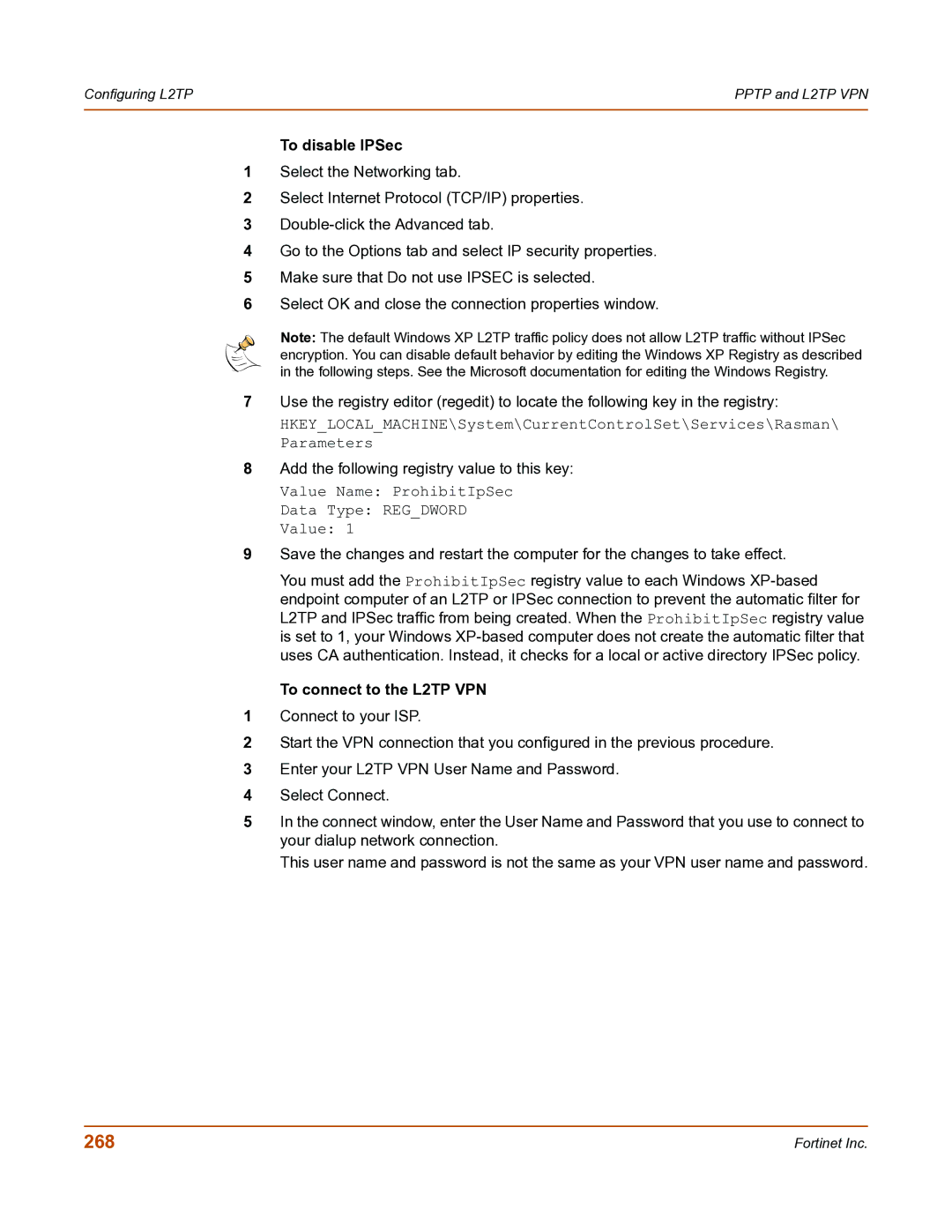
Configuring L2TP | PPTP and L2TP VPN |
|
|
To disable IPSec
1Select the Networking tab.
2Select Internet Protocol (TCP/IP) properties.
3
4Go to the Options tab and select IP security properties.
5Make sure that Do not use IPSEC is selected.
6Select OK and close the connection properties window.
Note: The default Windows XP L2TP traffic policy does not allow L2TP traffic without IPSec encryption. You can disable default behavior by editing the Windows XP Registry as described in the following steps. See the Microsoft documentation for editing the Windows Registry.
7Use the registry editor (regedit) to locate the following key in the registry:
HKEY_LOCAL_MACHINE\System\CurrentControlSet\Services\Rasman\ Parameters
8Add the following registry value to this key:
Value Name: ProhibitIpSec
Data Type: REG_DWORD
Value: 1
9Save the changes and restart the computer for the changes to take effect.
You must add the ProhibitIpSec registry value to each Windows
To connect to the L2TP VPN
1Connect to your ISP.
2Start the VPN connection that you configured in the previous procedure.
3Enter your L2TP VPN User Name and Password.
4Select Connect.
5In the connect window, enter the User Name and Password that you use to connect to your dialup network connection.
This user name and password is not the same as your VPN user name and password.
268 | Fortinet Inc. |
